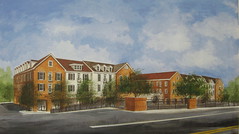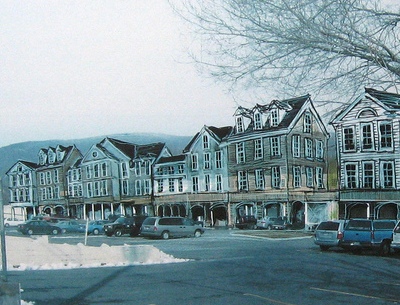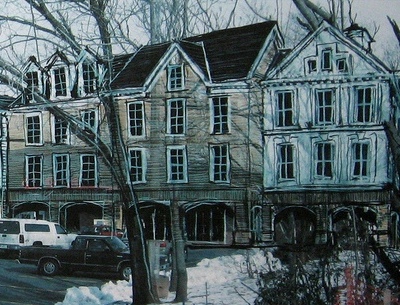Tertium Quids [click to read] reported it. The Heritage Foundation Dissects it Here [click to read]. Fishersville Mike [click to read] is straightforward about how Americans will react to it. The 775-page bill known as the Surface Transportation Authorization Act (STAA)reauthorizes the federal highway and transit programs that expired on September 30 for another six years. The problem is that this bill deals with more than just transportation.
Heritage Foundation states: "If enacted into law, Oberstar's STAA would mark a dramatic, harmful change in federal transportation policy by:
Shifting resources from cars to trolleys and buses,
Requiring a huge tax increase to fund these new commitments,
Centralizing transportation decisions in Washington,
Necessitating a substantial increase in the number of state, local, and federal government employees,
and Discouraging the private sector from investing in surface transportation projects."
Higher Taxes for Social Engineering
Heritage continues: "As written, many provisions of STAA have two primary purposes:
Deterring the use of automobiles; and Forcing residential and commercial development into higher density urban communities where public transit, walking, and bicycling would be the main form of transportation."
"To do this, Oberstar's bill would encourage and require states and metropolitan planning organizations to use new land use regulations that would lead to much higher densities than Americans now prefer."
And all this would require an additional $150-$200 billion in taxes over the next six years!
The reason for these drastic measures: reduction of greenhouse gasses. Yes, look for the government to try to move us into flats in some monolithic high rise buildings.
The problem is that with global warming being steadily debunked and given our desire as Americans to live in the village with a great degree of mobility, these are unnecessary costs and we can not afford to bear them right now.
Ironically state level Democrats often run promising to improve transportation. Their answer is to collect more taxes and build more roads. And that brings me to my point. Government in many cases created the problems in the first place.
Much of the overpaved suburban landscape is created in response to planning criteria in the first place. One of my favorite examples is a training center for foreign students where the county required sixty more parking spaces than necessary. Their reasoning: code required it. My client's reasoning: short-term visitors from developing nations won't be bringing their cars!
Overlapping parking requirement with other businesses, nonstandard road sizes, deleting large deceleration lanes and creative clustering in rural areas all require special permits, extra hearings and extra expense. The incentive is there to build what you know passed the month before.
In 1947 the British produced similar legislation in order to preserve the surrounding countryside. This resulted in British homes being the smallest and most expensive in any advanced country. British politicians are now seeking to change the law to make housing more affordable.
I would argue that preserving our rural land resources is an important goal. Tax policy [Francis Chester's revolution] would go a long way in securing this goal. Aaron Sime, the Libertarian candidate for state senate, presented the concept of locking in tax rates on rural land to the valuation at the time of sale. Father to Son/Daughter transfers would not trigger a new valuation. Here's another. Builders howl at the imposition of 'impact fees' but here's how 'impact' might be fairly treated. If you build within established infrastructure, as in infill projects, you pay no fee. New projects requiring additional government infrastructure would be subject to a fee system. Building were no infrastructure exists or is planned would require the developer to provide roads and utility construction as part of the cost of the project. Thus there would be a cost advantage to re-using the existing urban infrastructure but not a mandate.

Proposed Village Center for Crozet.
Village centers like this one proposed for Crozet would be a winning solution for all. The concept calls for taking the old strip mall and making a multiuse village center that would anchor the town around a pedestrian friendly grouping of condominiums and businesses. Indeed it would seem to productive to explore transforming our suburbs into Jefferson's villages. Link the village centers with the bus system where the density allows for it. Allow 'granny flats' and garden plots in floodplains and let a little creative diversity flow...
...but don't let the government do it. Let people build it because they want it.

Crozet Village Center...

...creates a new pedestrian friendly town center from an old strip mall.
No comments:
Post a Comment